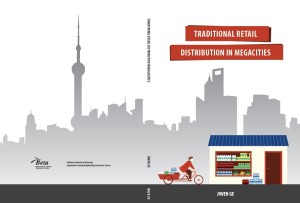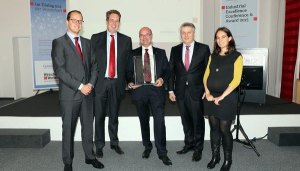Reaching 50 Million Nanostores: Retail Distribution in Emerging Megacities has been published. In more than 400 well-accessible pages, Jan C. Fransoo (Eindhoven University of Technology, Netherlands), Edgar E. Blanco (Center for Transportation and Logistics at MIT), and Christopher Mejia-Argueta (Center for Transportation and Logistics at MIT) share their views and extensive experience in studying and working with the millions of family-owned small stores in the large metropolitan areas of much of the developing world. Along with a set of authors from the region, the editors introduce 11 case studies about how to win in the fragmented and challenging retail landscape where these small retail outlets are located: to serve them with effective logistics and commercial strategies.
For many consumer packaged goods (CPG) manufacturers, this channel represents 40-90% of sales in more than half of the world’s markets. As such, the nanostore channel is a force to be reckoned with. Unfortunately, many managers have not only a poor understanding but often also a completely wrong perception of this channel. This book helps anyone interested to understand this market segment where CPG sales are still growing. Next to an exposition of the editors’ views on current practice and future developments, the book contains an extensive set of case studies from nine countries in Latin America, Asia, Africa and Southern Europe. Companies covered include highly successful local brands like Nutresa in Colombia and Danone’s Bonafont water in Mexico. The full Table of Contents is included below.
The book is accessible to anyone for about 25 US dollars on Amazon. If you want the many pictures, figures and tables in full color, the book is also available at just over double this price, also on Amazon. Make sure saving on shipping costs by using your local Amazon platform. An extensive list of countries is included at the bottom of this post. If your country is missing, please let us know. For those that prefer reading an e-book, a Kindle version should become available by mid-November.
Reviews
“As the world population tends to concentrate more and more in urban environments, the two fastest growing channels for consumer goods distribution are online sales and convenient, proximal nanostores. Remarkably, this trend applies to both the most and the least developed economies. This book is a valuable resource that covers the realities and the challenges of serving nanostores, a subject much less widely covered than the “sexier” online e-commerce channel, but equally important for understanding the evolution of the world’s fast moving consumer goods markets.” – Sergio Barbarino, Procter & Gamble Research Fellow and Chairman of The European Technology Platform for Logistic Innovation, ALICE.
“This book provides frameworks, concepts, practical tips, and rich examples for developing effective nanostore supply chains, enabling value creation for both business providers and the general population in developing economies” – Hau L. Lee, Thoma Professor of Operations, Information and Technology at the Stanford Graduate School of Business.
“Understanding the nanostores business in emerging markets is critical to the growth strategy of most fast moving consumer goods firms, and this has not been an easy task. This book provides a clear understanding of the complexity and networks of nanostores through its rich material, including frameworks and cases that are important and useful in developing an effective distribution strategy to serve and win in this complex marketplace.” – Danillo G. Figueiredo, Global Director of Supply Integration at Anheuser-Busch InBev
Table of Contents
Non-exhaustive list of countries where the book can be ordered locally
Barnes and Noble USA: B&W
Amazon Brazil: B&W
Amazon India: B&W
Amazon Japan: B&W
Amazon Mexico: B&W






 In the thesis, using analytical mathematical modeling, four topics are addressed:
In the thesis, using analytical mathematical modeling, four topics are addressed:

